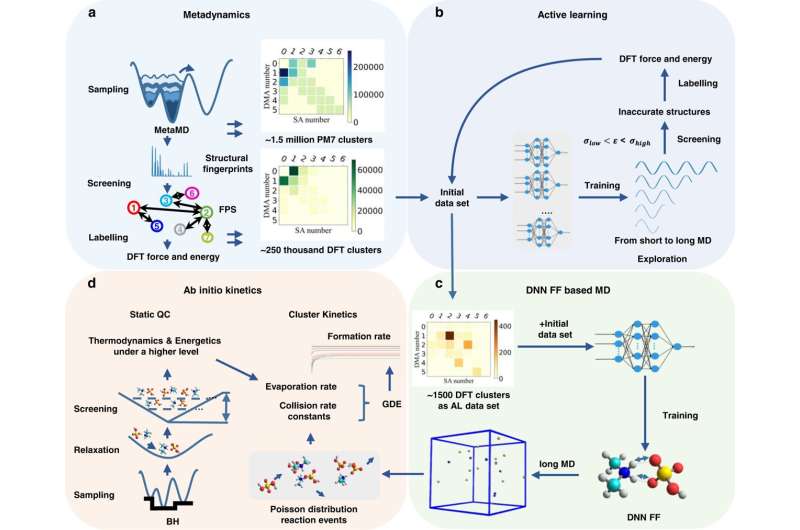New way to boost simulation of atmospheric aerosol nucleation

Recently, a research team led by researcher Jiang Shuai from the University of Science and Technology of China (USTC) of the Chinese Academy of Sciences, developed a general workflow to simulate atmospheric aerosol nucleation by using the full ab initio method. This work was published in Nature Communications.
Atmospheric aerosol nucleation contributes to almost half of the cloud condensation nuclei in the world, and thus it has a huge impact on global climate change, air quality, and human health. However, due to the nonreactivity of force fields (FF) and the tremendous computational costs of direct molecular dynamics (MD), little is known about the mechanism of atmospheric aerosol nucleation.
The researchers presented a general workflow to simulate atmospheric aerosol nucleation. In the workflow, they utilized active learning techniques to prepare the metadynamics sampling, and obtained the comprehensive data sets. By developing a deep network-based force field (DNN-FF), they conducted simulations of nucleation MD, through which they attained the collision rate constants based on the Poisson distribution.
Additionally, the researchers integrated the DNN-FF-based MD-derived collision rate constant to a cluster kinetics model, which was coupled with static quantum chemistry (QC)-derived evaporation rates.
This study provides a more effective and economical method to realize the full ab initio simulation of atmospheric aerosol nucleation, and a better understanding of the mechanisms of aerosol nucleation.
More information: Shuai Jiang et al, Towards fully ab initio simulation of atmospheric aerosol nucleation, Nature Communications (2022). DOI: 10.1038/s41467-022-33783-y
Journal information: Nature Communications
Provided by Chinese Academy of Sciences





















